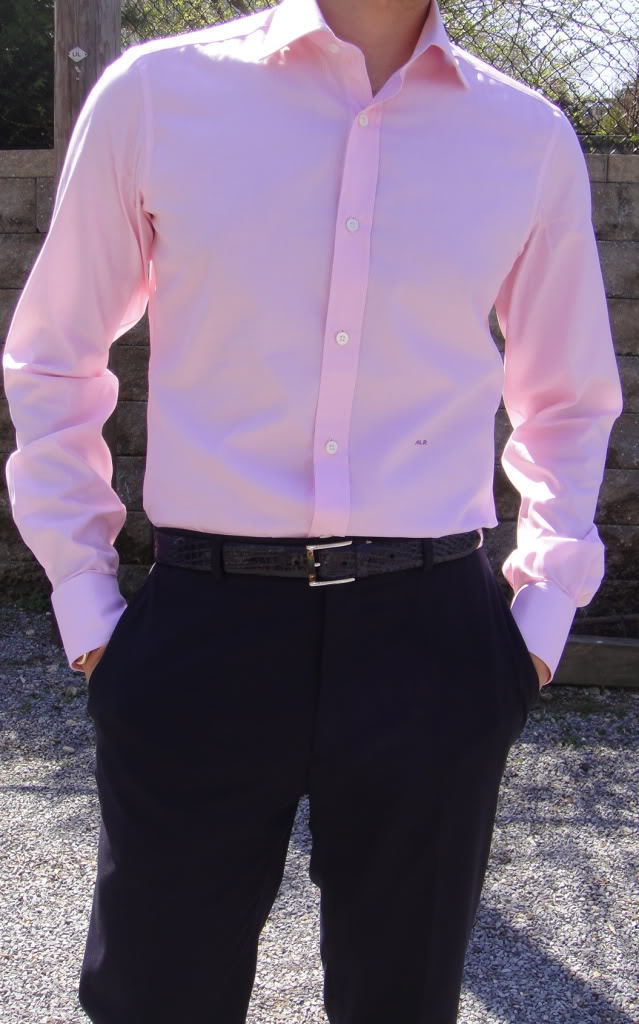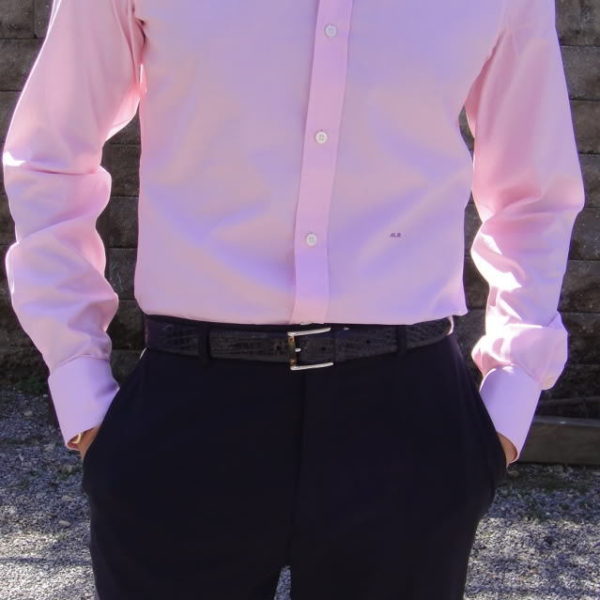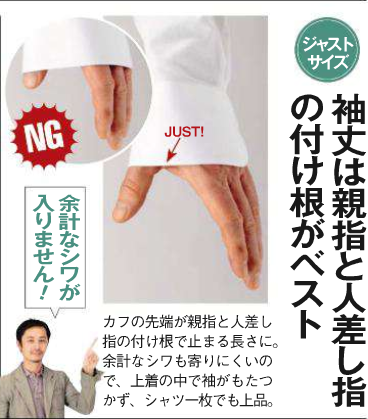
Most men can find a well-fitting shirt off the rack. The question is just how well fitting they want it. SpooPoker, a member at StyleForum, posted a photo of himself in his made-to-measure pink Charvet shirt some years ago. I think it’s a good example of what a truly well fitting shirt should look like. Let’s talk about each dimension of a shirt’s fit in turn:
- Shoulders: How cleanly a shirt fits will be affected by whether your shoulders curve forward or backward, and whether they slope. More often than not, they do, and usually one will curve or slope more than the other. This will create wrinkling around the collar bone or, sometimes, the rib cage. To ameliorate this, a shirtmaker has to cut the shoulders and yoke correctly in order to account for your body’s nuances.
- Chest: A shirt’s chest should fit cleanly, but it should also be somewhat full in order to allow movement. There shouldn’t be any pulling under the armholes or around the front’s buttons.
- Waist: Whether you have the waist taper in or not depends on your build. One thing is for certain, however – your shirt should flatter you when you’re standing up or sitting down. Many men opt for overly slim fitting shirts, only to realize that their shirts have unsightly pulls across the stomach when they’re seated. This should be avoided.
- Sleeves: Correctly set sleeves should come down to the webbing between your thumb and index finger when the cuffs are unbuttoned. When the cuffs are buttoned, the sleeve should sit a little bit below your wrist. By having some extra material in the length, you’ll ensure that your sleeves won’t ride up your arm when you extend them. Above are two photos from Men’s Ex that illustrate this well.
- Neck: If you button your shirt all the way up, you should be able to comfortably slip just your index finger between your neck and collar. Note that this is only after a few washes, however. Most shirts fit a bit looser in the neck when they’re new, so that they can account for shrinkage.
- Collar: When your collar is buttoned up, the collar points should touch your chest. If it doesn’t, your collar is too short.
Now, as to whether you need to go custom in order to achieve a good fit depends on how well off-the-rack shirts currently flatter you and how demanding your standards are. Most men will be fine with off-the-rack, and they can get an alterations tailor to nip the waist, slim the sleeves, and tighten the cuffs if they need to. However, it’s also quite common for men to have curved or sloping shoulders, which in turn gives them a slightly less clean look. If you want to solve those issues, sometimes a custom shirtmaker is the only way to go.
Whichever you choose – custom or off-the-rack – it’s worth emphasizing that your shirt should allow movement. Most men wear shirts that are too baggy; many wear them too tight. Getting the right fit is about finding that delicate balance between flattery and function. Your shirt should look nice even if you extend your arms or sit down, so don’t judge its fit by just how well it looks in front of the mirror. Take Spoo’s shirt above as an example. It’s neither baggy nor tight, so there aren’t excessive folds of cloth or pulling in the waist or chest areas. It fits cleanly, just as a truly well-fitting shirt should.
Check back tomorrow, when we’ll talk about shirt fabrics.










